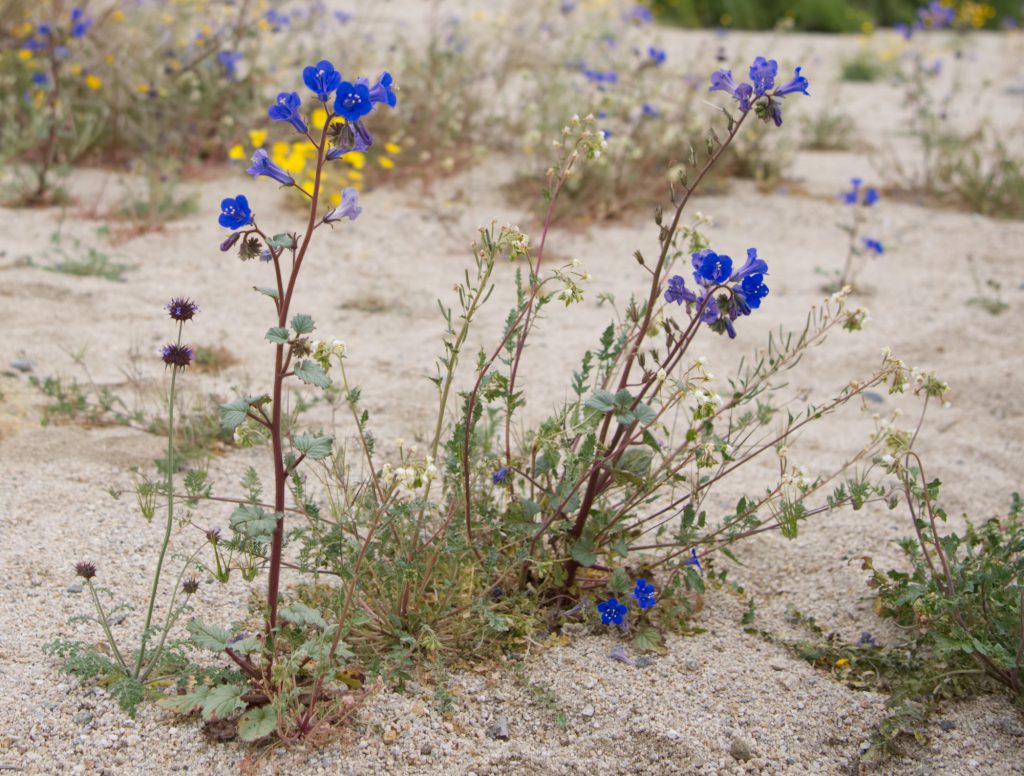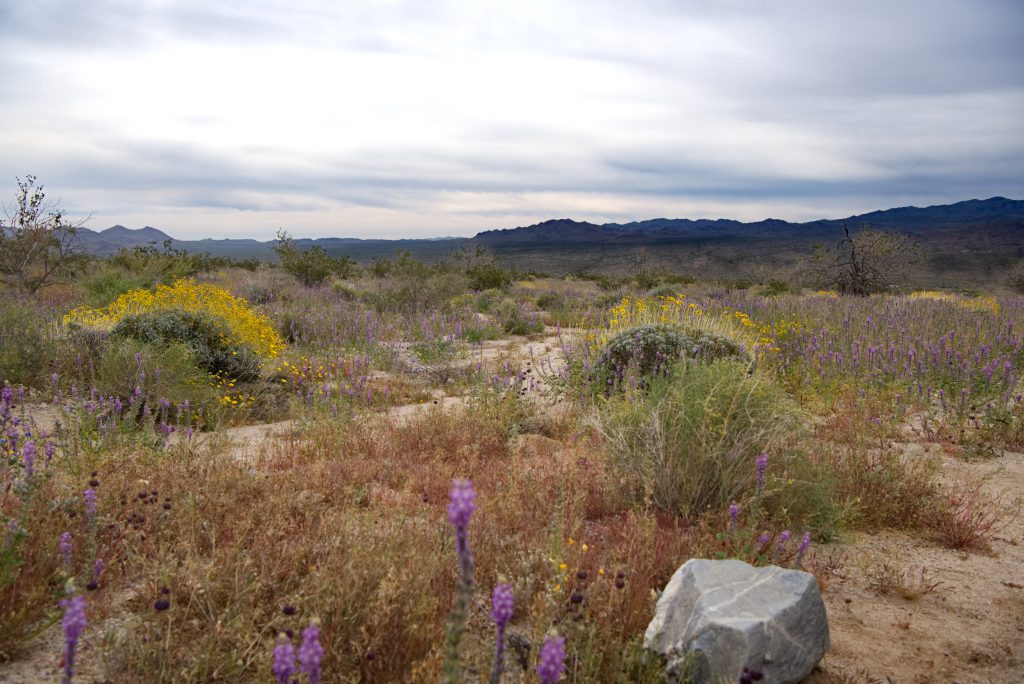
Joshua Tree National Park gained a certain notoriety this past winter, when idiots went there during the federal government shutdown and trashed the place. The vandals chopped down the iconic Joshua trees (Yucca brevifolia), let their dogs run around unleashed, left litter scattered over the landscape, and carved new roads through the desert. I’d like to give most people the benefit of the doubt and assume that they didn’t realize the damage they were doing to the park. However, it takes only a few bad apples to destroy a public resource for everybody, as we’ve all experienced at some point.
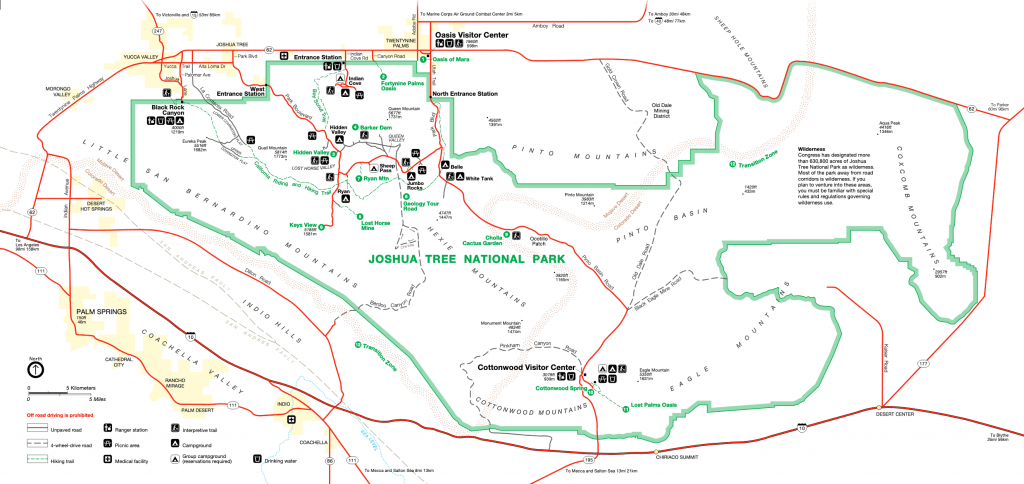
The very first thing I learned about Joshua Tree is that it has two distinct desert habitats. Hey, I’m a marine biologist, and the desert–any desert–is new territory for me. None of this landscape has been anywhere near the ocean for millions of years! Anyway, the eastern half of the park is Colorado Desert, which is similar to what we had seen at Anza-Borrego State Park. Many of the plants in this region were also familiar to us because we had seen them in Anza-Borrego, but for the most part were more abundant here in Joshua Tree.
For example, we saw many more bluebells (Phacelia campanularia) at Joshua Tree than in Anza-Borrego. The P. campanularia at Joshua Tree also looked healthier (more robust and vigorous, less spindly) than they did in Anza-Borrego. Perhaps the higher elevation of the Colorado Desert in Joshua Tree (approximately 914 meters, or 3000 feet) compared to Anza-Borrego (182 meters, or 597 feet) accounts for this observation.
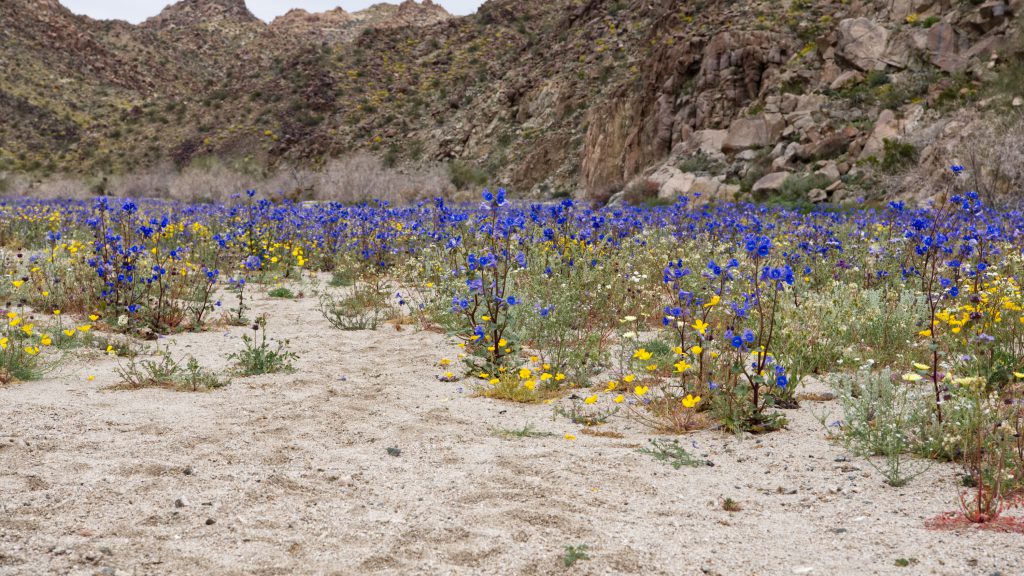
2019-03-27
© Allison J. Gong
I really liked the Colorado Desert in Joshua Tree. Even though it was the same ecosystem as what we saw in Anza-Borrego, here the flowers seemed more colorful and striking. The yellows were a little brighter, and the pinks and blues a little deeper. The scenery was breathtaking everywhere I looked. I wish my photos could do justice to the beauty of the landscape.
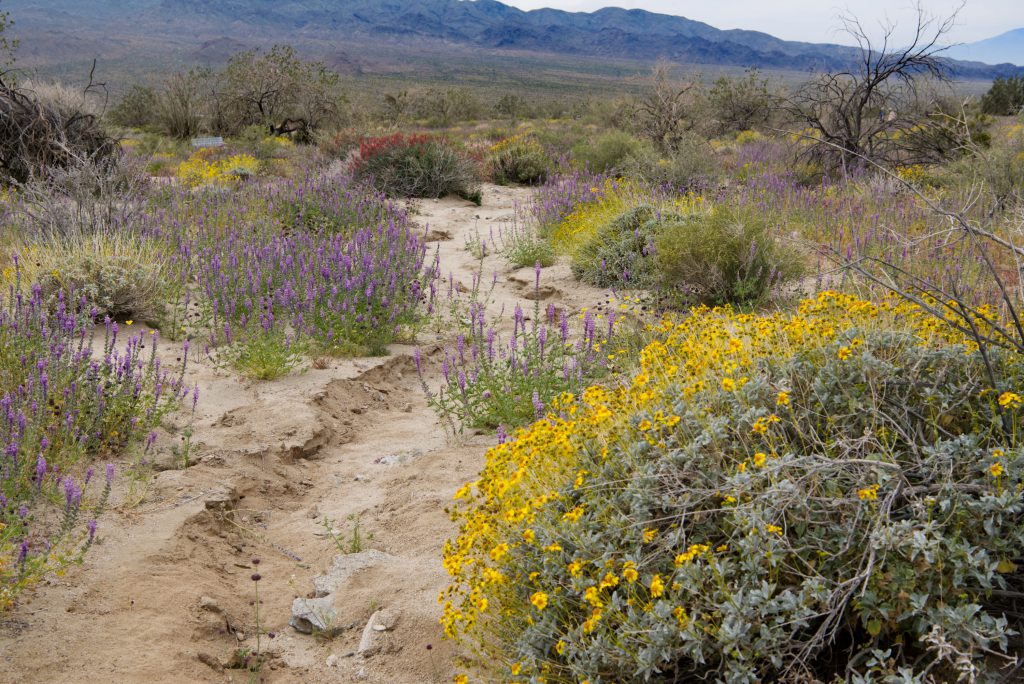
2019-03-27
© Allison J. Gong
Aside from the desert bluebells, other flowers that we had seen at Anza-Borrego included the brittlebush (Encelia farinosa), which seems to be ubiquitous in the Colorado Desert. The Arizona lupine (Lupinus arizonicus) was also common in Joshua Tree; like the bluebells, these appeared to be more robust here than in Anza-Borrego.
There were new flowers, too. My favorite, which I didn’t see a lot of, was this desert globemallow, Sphaeralcea ambigua:
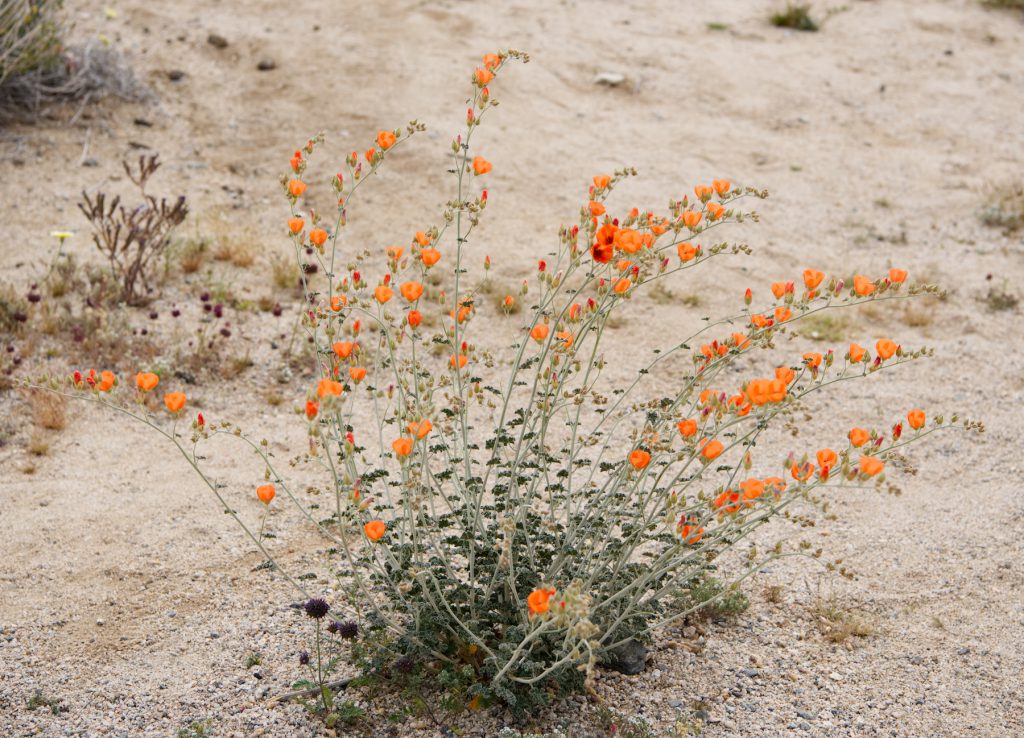
2019-03-27
© Allison J. Gong
Here’s a close-up of the same plant. Look at that gorgeous orange color!

2019-03-27
© Allison J. Gong
Against the prevailing palette of yellows and purples, this orange really stood out and caught the eye. This plant is also called the apricot mallow, for obvious reasons.
Some other flowers that we saw:
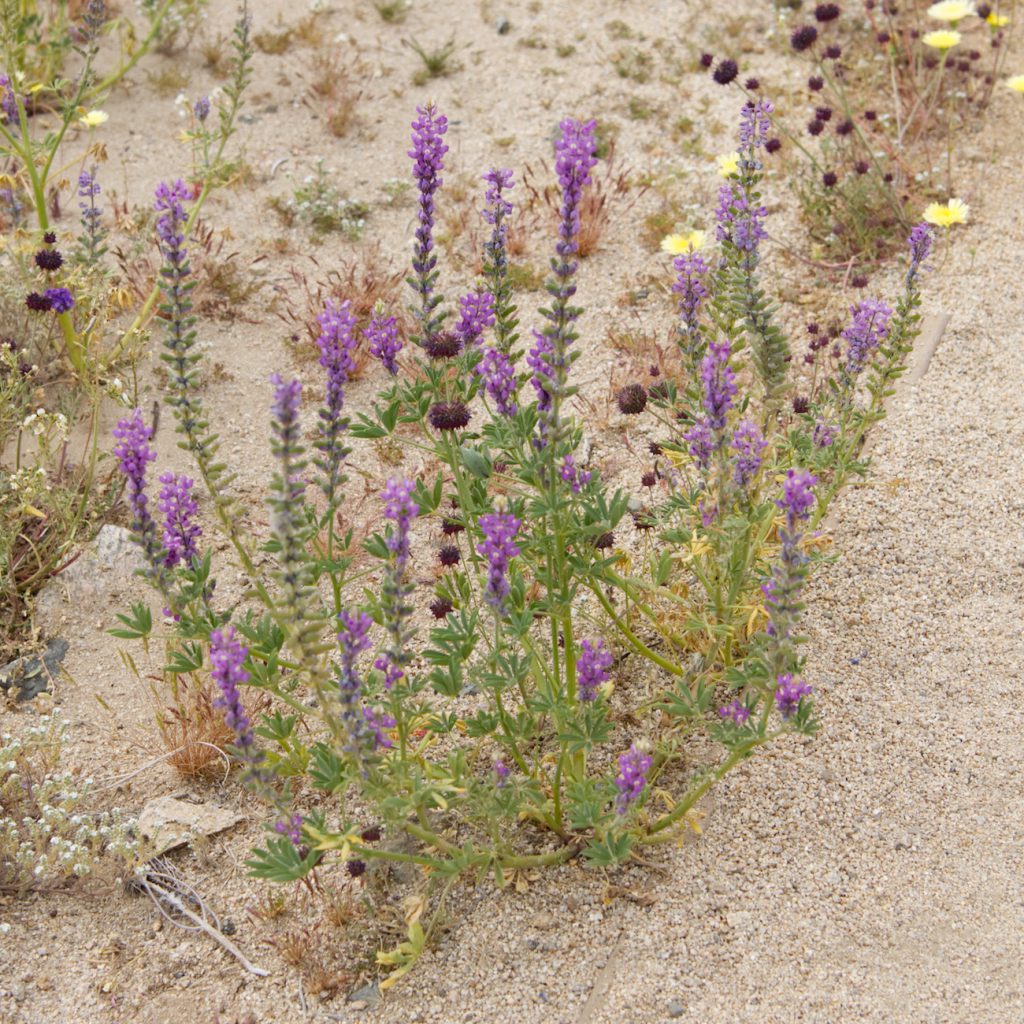
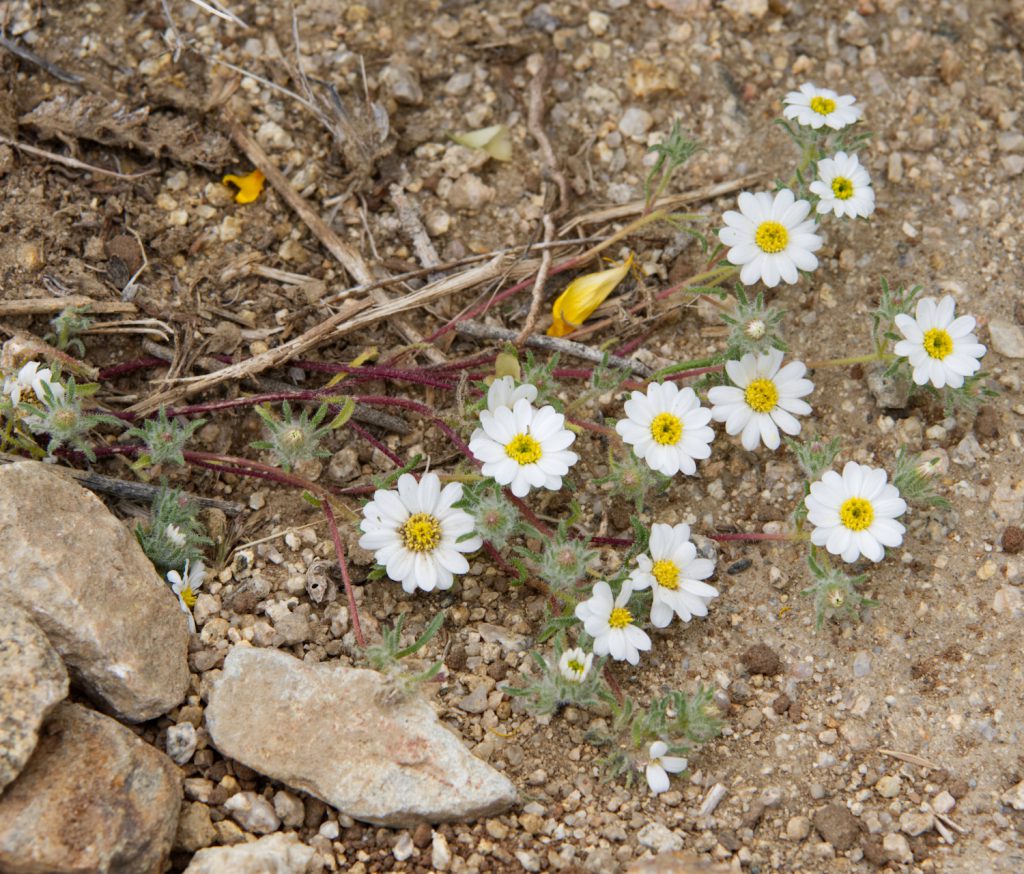
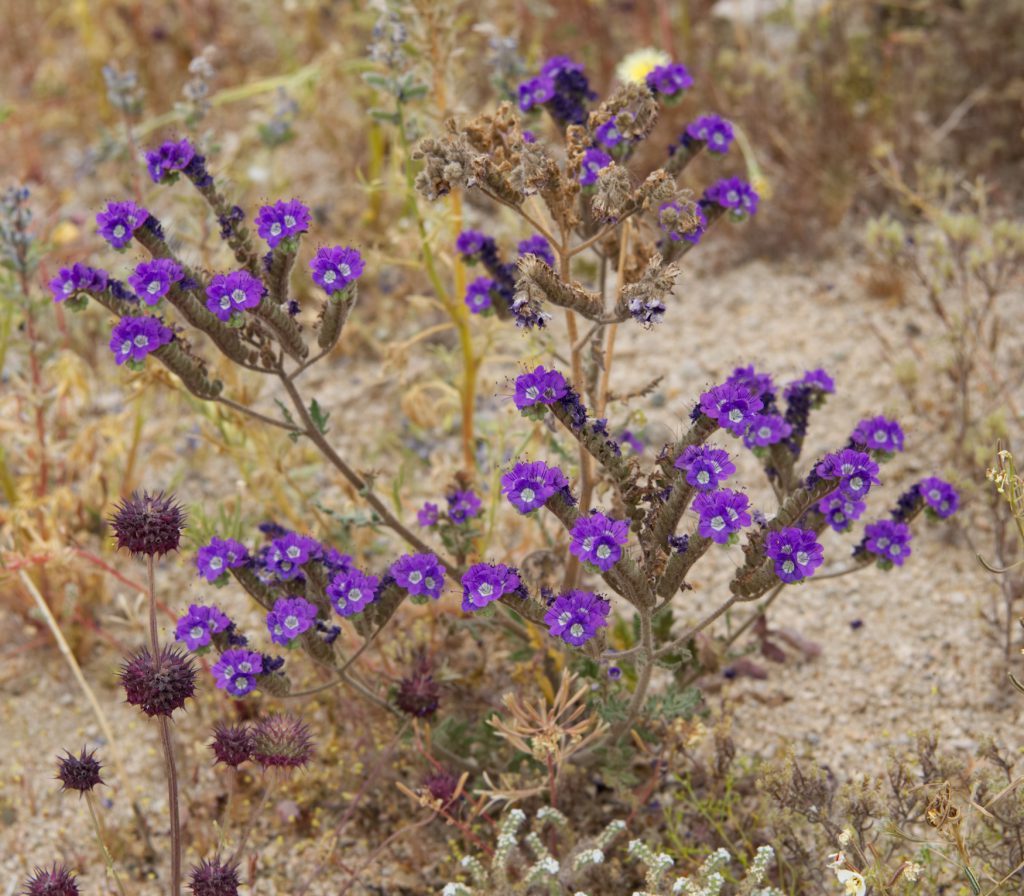
Among all the colorful flowers in the overall landscape, there was this very subtle plant, easily overlooked by eyes accustomed to more brilliant blossoms.
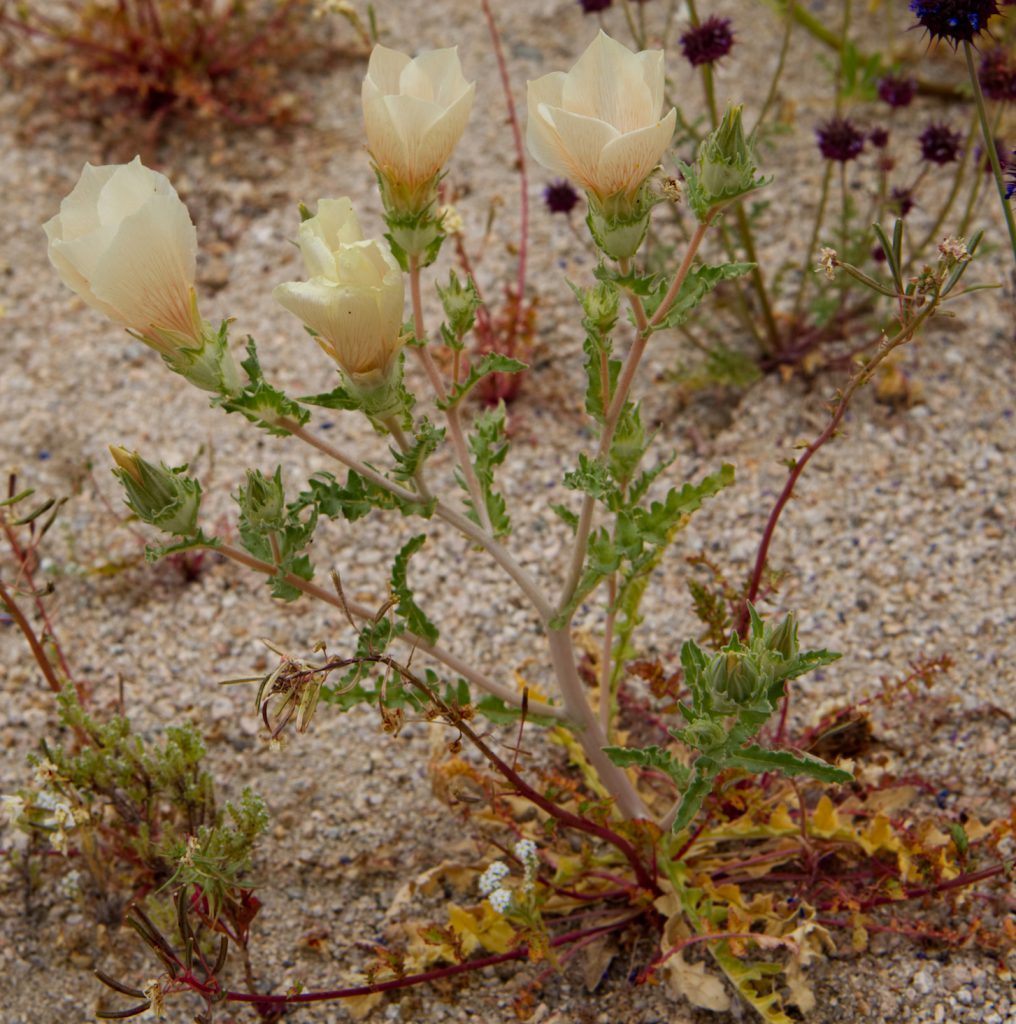
2019-03-27
© Allison J. Gong
Something that tickled my funny bone was the little chia plant, Salvia columbariae. It looks like a prickly purple pom-pom. Two days in the desert had taught me not to touch things if I didn’t know what they were, but I had to know if these blossoms were as pokey as they looked. They weren’t!
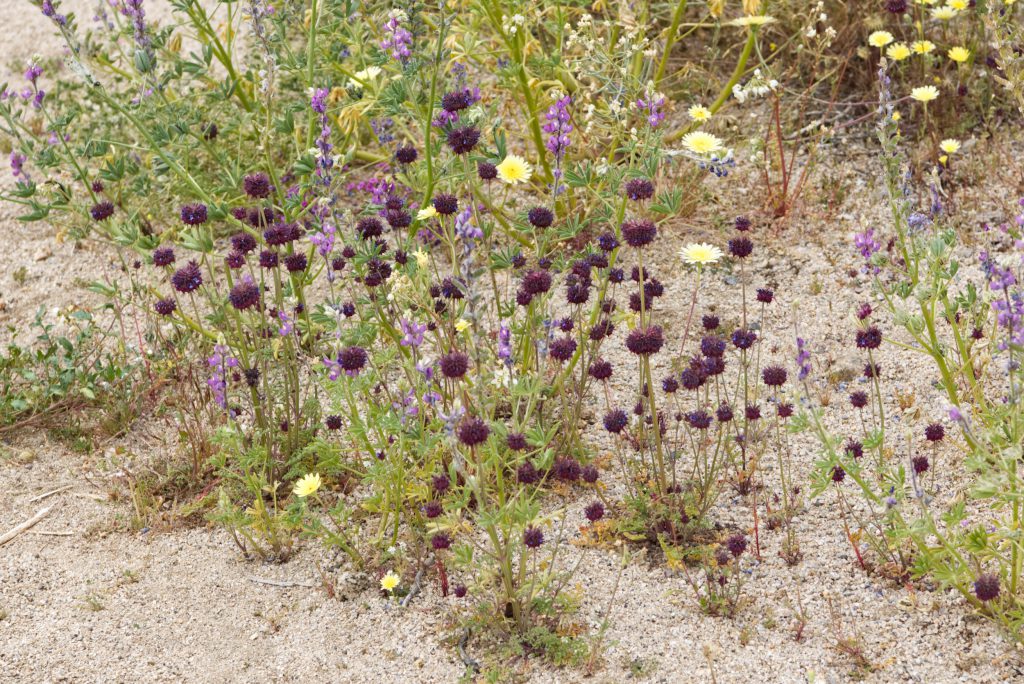
2019-03-27
© Allison J. Gong
There are parasitic plants in the desert, too. The red branches in this bush are the desert mistletoe (Phoradendron californicum), a hemiparasite. It drains water and nutrients from its host plant but performs its own photosynthesis.
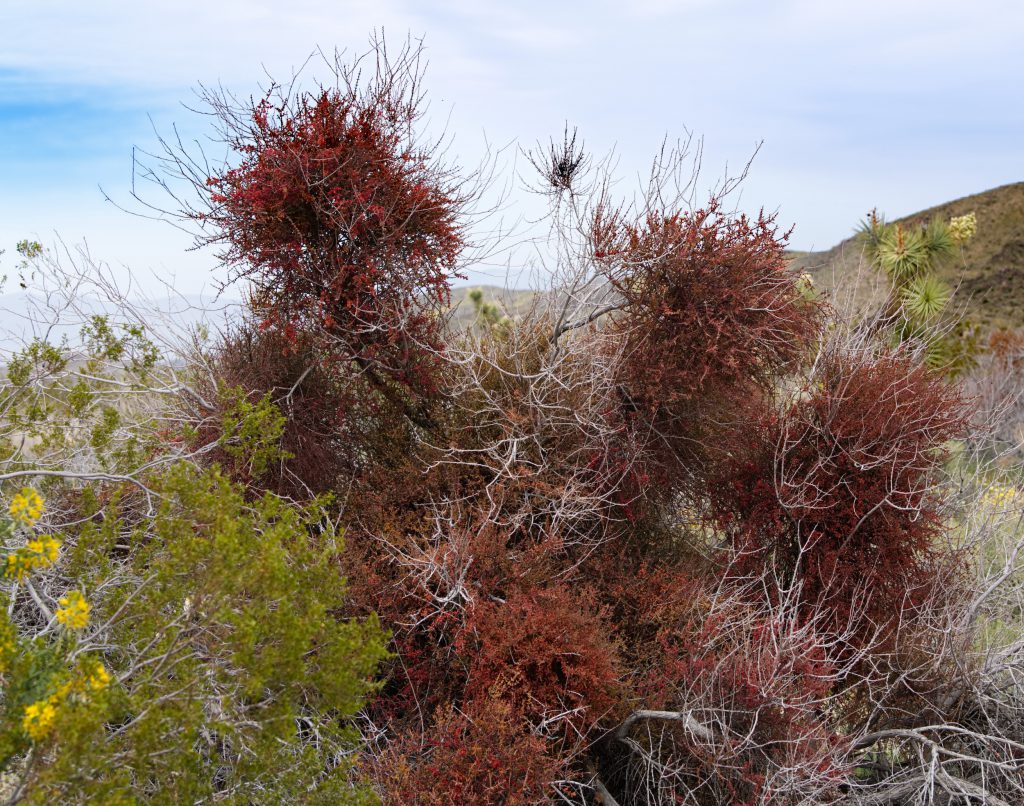
2019-03-27
© Allison J. Gong
In Joshua Tree National Park there’s an area called the Cholla Cactus Garden. Chollas are cactuses with cylindrical stems, rather than the flat stems of the beavertail or prickly pear cactuses. The most common one in the Colorado Desert (that we saw, at least) was the teddybear cholla, Cylindropuntia bigelovii. As the name implies, it’s a cute, fluffy cactus, but it’s definitely still a cactus.

2019-03-27
© Allison J. Gong

2019-03-27
© Allison J. Gong
The teddybear cactus blooms in May and June, so we didn’t see any flowers. In addition to having the normal plant sex using flowers, these cactuses also reproduce clonally by dropping branches. The dropped pieces roll around and find a new place to attach and grow. Interestingly, this type of clonal replication, called budding, is common in many marine invertebrates!

2019-03-27
© Allison J. Gong
Here’s a newly detached bud from a teddybear cholla:
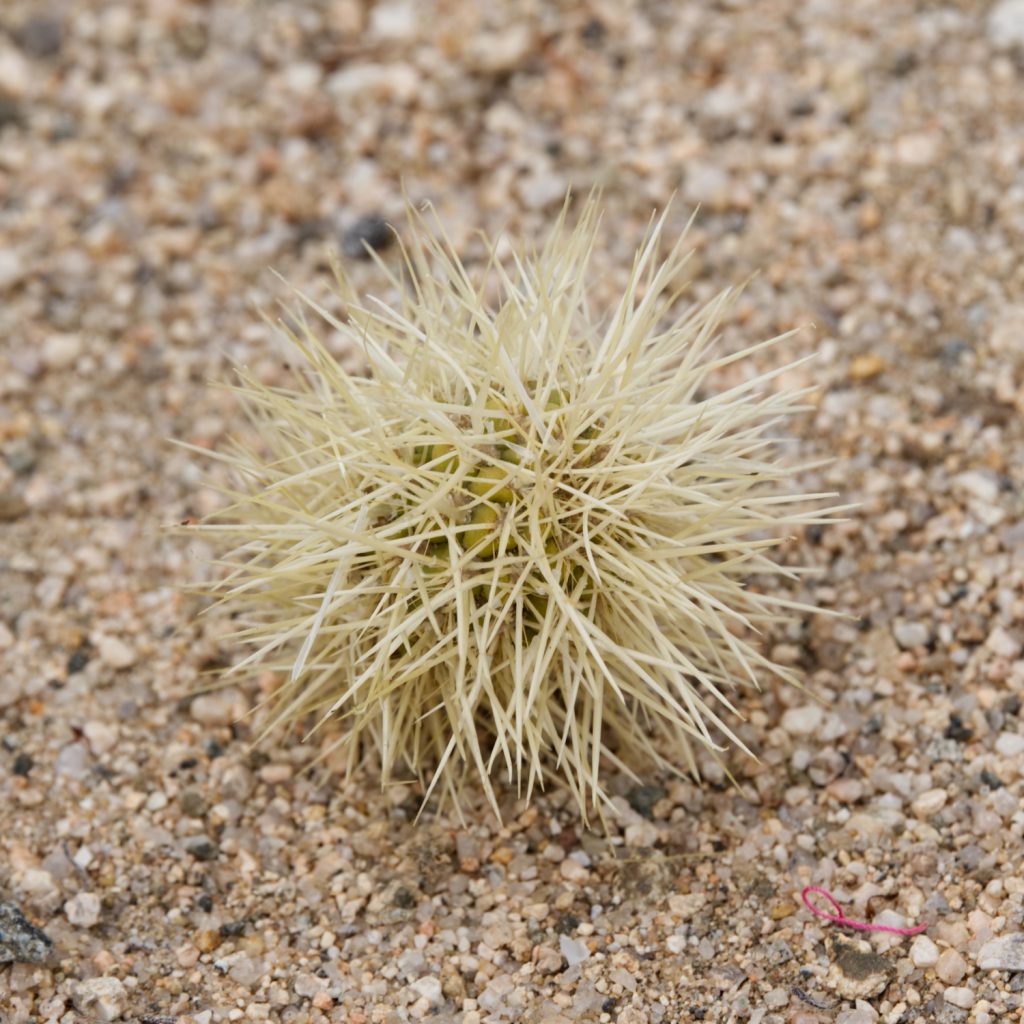
2019-03-27
© Allison J. Gong
And here’s a recently established, young plant:
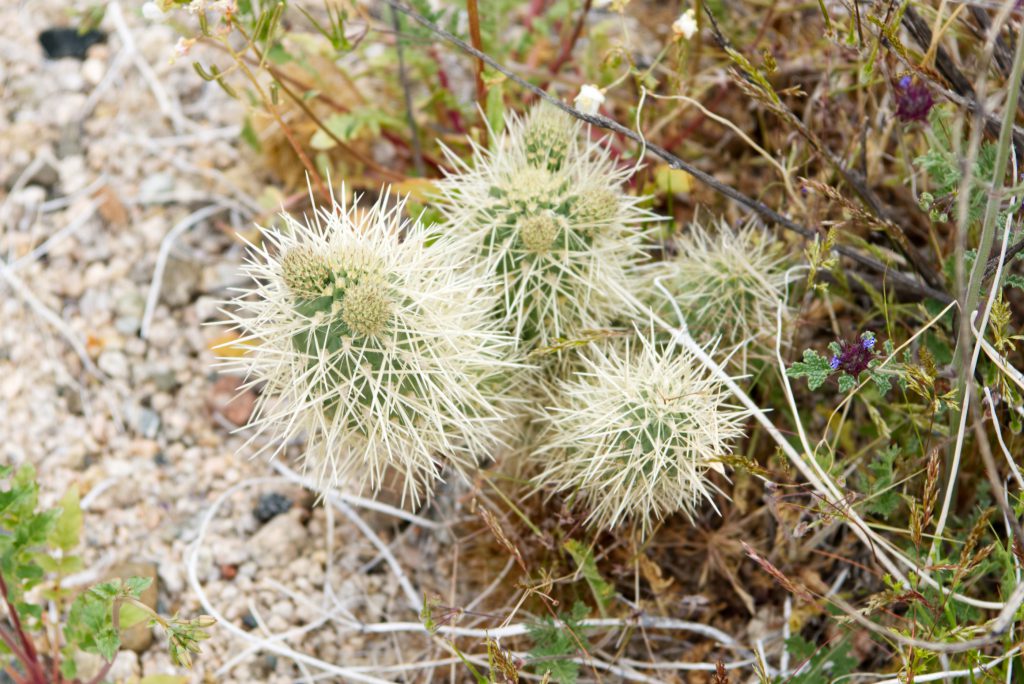
2019-03-27
© Allison J. Gong
Cute little cactus, isn’t it?
The trees that give Joshua Tree National Park its name live in the higher and cooler western region of the park, known as the Mojave Desert. The Joshua trees (Yucca brevifolia) live singly or in clusters. In some ways, Y. brevifolia is the symbol of the Mojave Desert. They are also abundant in the higher elevations of the Tehachapi Mountains along Highway 58 between Bakersfield and the town of Mojave.
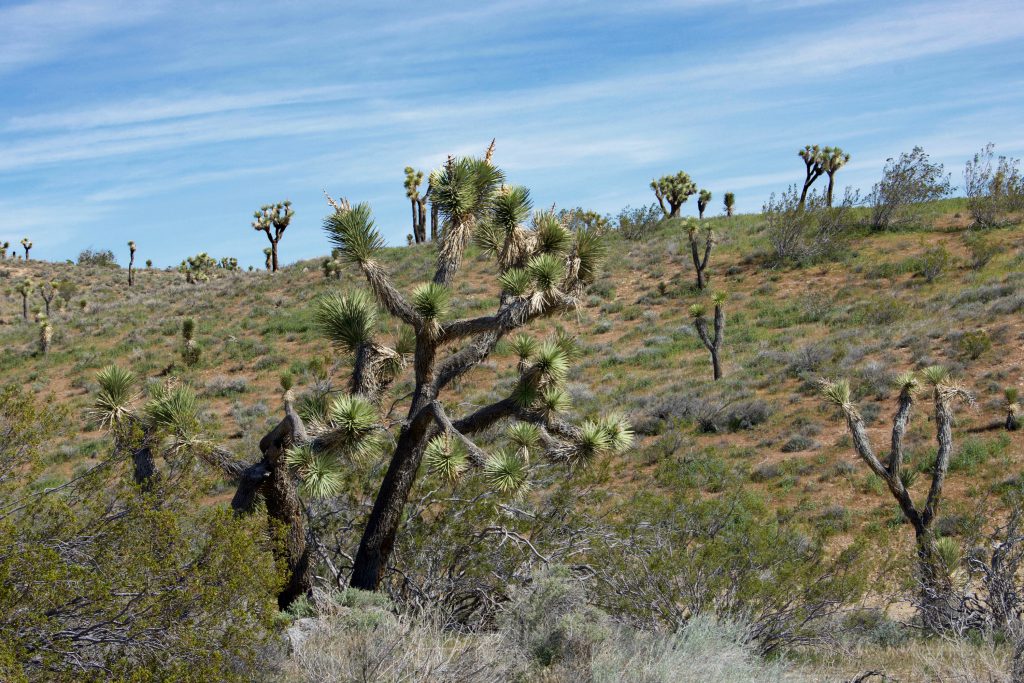
2017-03-24
© Allison J. Gong
In Joshua Tree National Park, said trees were blooming in late March.
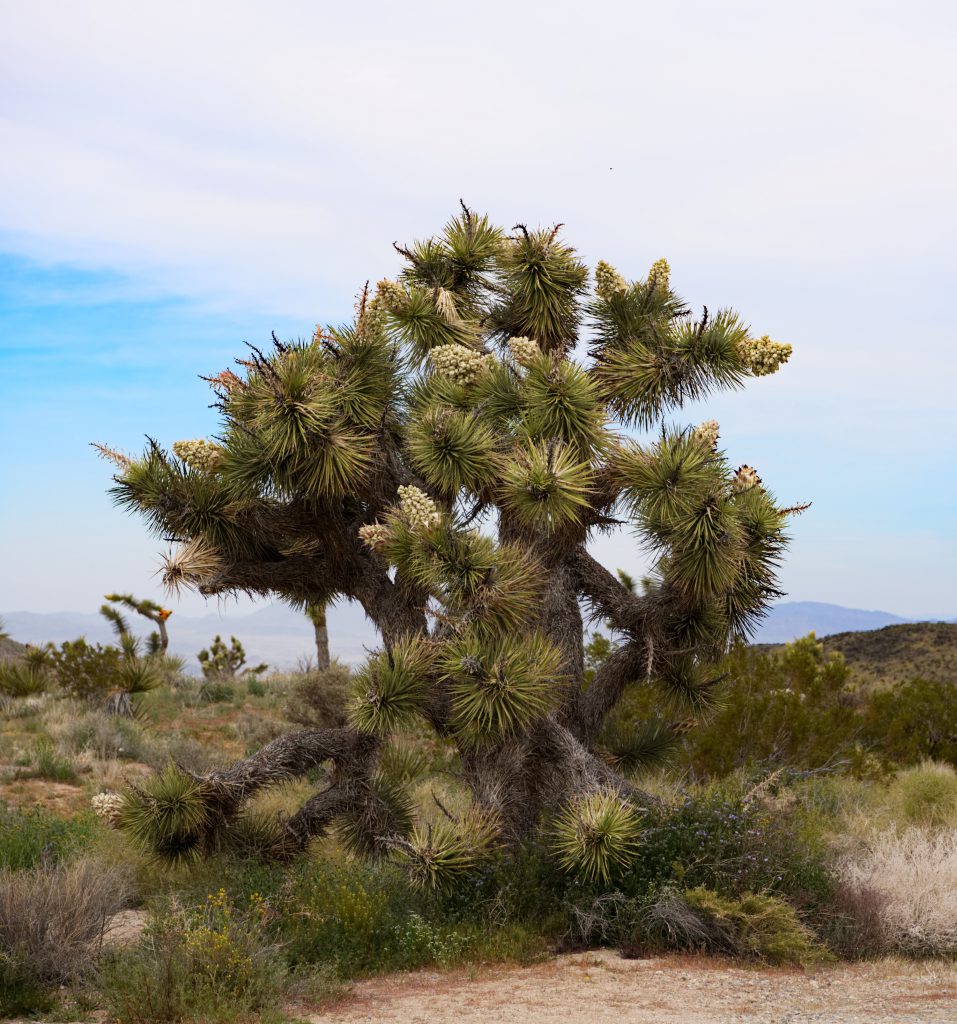
2019-03-27
© Allison J. Gong
I’ll have more to say about reproduction in Joshua trees and some other desert plants in another post. This one is getting long, and we had more desert adventures to come.
Next stop: Death Valley

